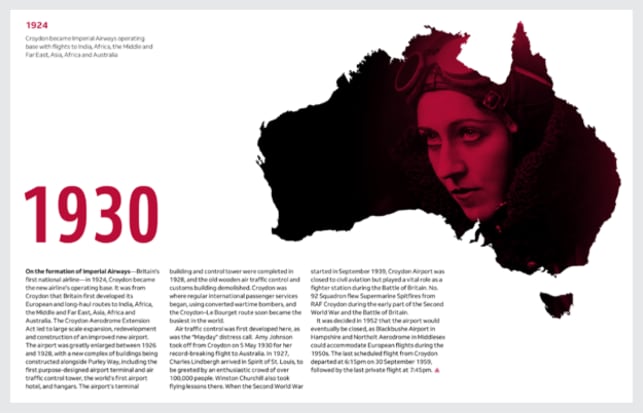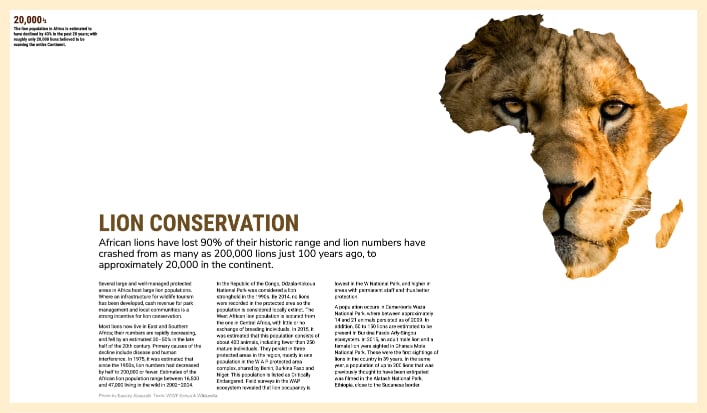LION CONSERVATION
African lions have lost 90% of their historic range and lion numbers have crashed from as many as 200,000 lions just 100 years ago, to approximately 20,000 in the continent.
Several large and well-managed protected areas in Africa host large lion populations. Where an infrastructure for wildlife tourism has been developed, cash revenue for park management and local communities is a strong incentive for lion conservation.
Most lions now live in East and Southern Africa; their numbers are rapidly decreasing, and fell by an estimated 30–50% in the late half of the 20th century. Primary causes of the decline include disease and human interference. In 1975, it was estimated that since the 1950s, lion numbers had decreased by half to 200,000 or fewer. Estimates of the African lion population range between 16,500 and 47,000 living in the wild in 2002–2004.
In the Republic of the Congo, Odzala-Kokoua National Park was considered a lion stronghold in the 1990s. By 2014, no lions were recorded in the protected area so the population is considered locally extinct. The West African lion population is isolated from the one in Central Africa, with little or no exchange of breeding individuals. In 2015, it was estimated that this population consists of about 400 animals, including fewer than 250 mature individuals. They persist in three protected areas in the region, mostly in one population in the W A P protected area complex, shared by Benin, Burkina Faso and Niger. This population is listed as Critically Endangered. Field surveys in the WAP ecosystem revealed that lion occupancy is lowest in the W National Park, and higher in areas with permanent staff and thus better protection.
A population occurs in Cameroon's Waza National Park, where between approximately 14 and 21 animals persisted as of 2009. In addition, 50 to 150 lions are estimated to be present in Burkina Faso's Arly-Singou ecosystem. In 2015, an adult male lion and a female lion were sighted in Ghana's Mole National Park. These were the first sightings of lions in the country in 39 years. In the same year, a population of up to 200 lions that was previously thought to have been extirpated was filmed in the Alatash National Park, Ethiopia, close to the Sudanese border.


